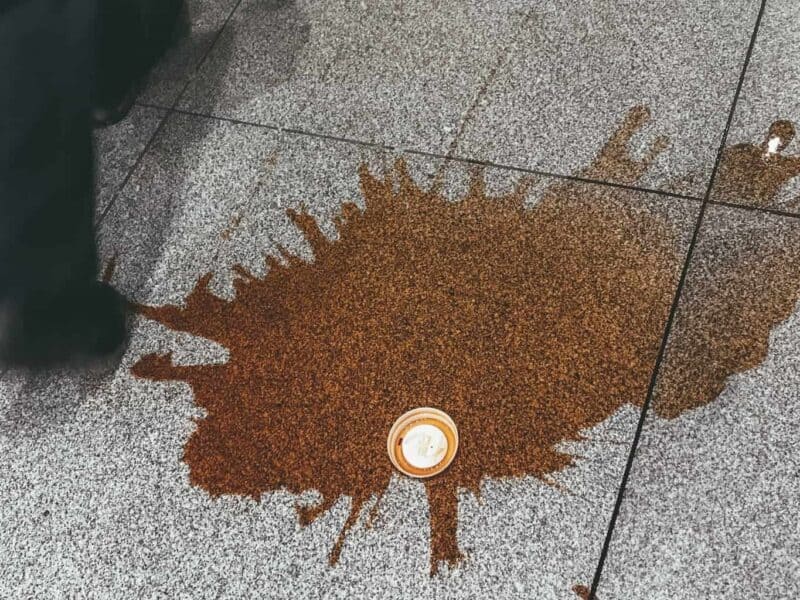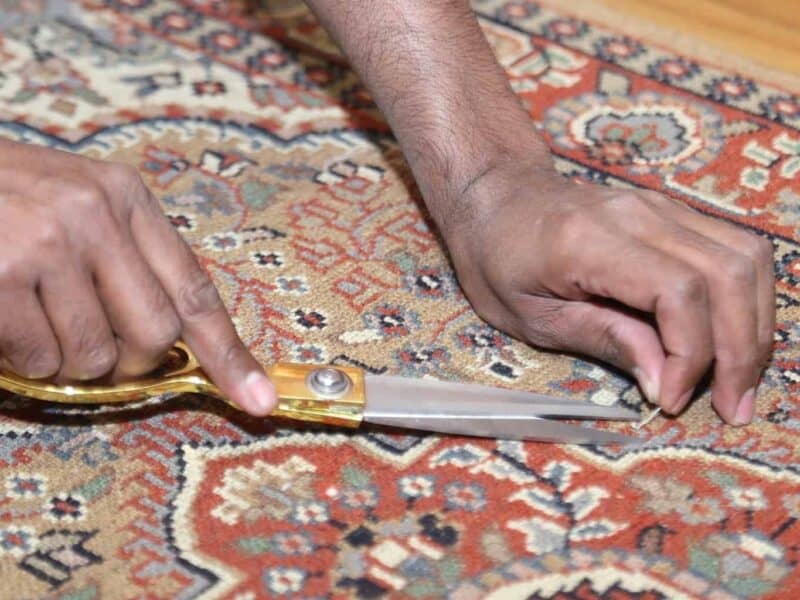
Despite the number of floor coverings that claim to be stain-resistant, eventual marring by marks and stains is inevitable, whatever type of flooring you choose, whether it is plush carpet or glossy wood, Soft Vinyl or hard natural stone.
Provided that the stain or mark is tackled quickly, most can be removed without professional intervention.
Prevention
We all know that prevention is better than cure and this is certainly true when it comes to floor stains. By modifying your usage slightly, you can go a long way towards avoiding nasty stains and marks that may be difficult to remove.
Tips for Protecting Your Floor
- With hard surface floors, even those designed for heavy traffic, such as Durable Laminate, take care when moving furniture or heavy objects across the floor. Ideally lift rather than slide, even with slick, shiny floors such as vinyl which looks as if sliding would be easier. If the object is really too heavy to be lifted, use a towel or a heavy sock under each leg to reduce damage to the floor.
- Even durable laminate and vinyl can be gouged, scratched or dented so even if the furniture is immobile, it is a good idea to use felt pads or fabric-covered casters or gliders on any part that comes into contact with the floor.
- For waxed floors, make sure that you avoid cleaning products that include or require water, always check the label and make sure it is compatible with the kind of wax on your floor surface. Also, never apply wax over a dirty floor.
- Try to avoid high heels on wood floors, laminate and vinyl if possible and if they have to be worn indoors, make sure that the heels are not worn down to the metal nails as this can seriously scratch the floor surface, particularly hardwood.
- Entrance mats are always a good idea, not only do they trap dirt and grime and outside moisture, they can also help to prevent unintended scratches from incoming or outgoing traffic, especially in the case of grit being tracked into the house.
- If you have potted plants, make sure that they are situated in special containers that have ‘legs’ to allow airflow beneath the waterproof saucers, so that water damage and staining are prevented.
Note: entrance mats are a good idea, try to avoid those which have a rubber backing as this may cause yellow discolouration of the floor underneath.
Choose instead mats with a natural fibre backing. Similarly, furniture feet made of rubber should be removed or separated from the floor surface by a coaster.
Be especially careful when using spirit-based products such as permanent marker pens, solvents, shoe polish and hair dye. If accidental marking does occur, wipe it off as soon as possible.
Similarly for strongly-coloured food products, such as mustard and turmeric and also when using any corrosive substances such as acid or alkaline cleaning solutions. These will quickly damage the surface of the floor so clean up any spills immediately.
Never use abrasives on polished surfaces as they can cause serious scratching.
Finally, humidity can play a role in floor damage, especially with hardwood floors – so try to keep humidity in the rooms between 45 and 55%.
Excessive moisture in the atmosphere can cause swelling in wood fibres, leading to cracks and buckles in the finish. Conversely, very dry conditions will cause floor boards to separate.
Dealing with Stains
Carpet stains can usually be successfully removed with patient sponging and blotting using just water and absorbent white paper towels, working from the inside of the stain outwards.
Avoid using detergents as if these are not thoroughly rinsed out, they will cause the carpet fibres to attract more dirt and grime and thus make staining even more likely in the future.
For serious stains, it may be worth hiring a professional carpet cleaner and an annual deep-clean is always recommended in any case.
For scratched or dented laminate and vinyl floors, commercial touch-up kits are easily available which include step-by-step instructions for a simple repair process.
If cleaning a stain from laminates or vinyl with a detergent solution, make sure that you rinse the floor thoroughly with clean water afterwards as otherwise, the detergent will leave a sticky film on the surface which will not only cloud the finish but also attract more dirt in the future.
For Hardwood Floors, the key is wiping up spills immediately. Moisture is the main enemy of timber flooring so never allow a wet area to stand. Use a soft, clean cloth to wipe up the liquid and then another dry cloth to make sure the area is completely dry.
Ceramic tile tends to be water-resistant but it is still a good idea to tackle any stains or spills immediately.
Usually, just mopping with hot water and mild household detergent should do the trick as the hot water will loosen the dirt and the detergent helps to lift any oily substances off the floor.
If the stain remains stubborn, try to loosen the spot with a soft brush or synthetic scouring pad but avoid steel wool or metal brushes as these can scratch the surface of the tiles.
Mildew is a common problem with ceramic tiles and this can be tackled with a solution of equal parts water and ammonia, together with a soft brush. (Always ensure good ventilation in the area when using ammonia and never mix with chlorine solution/bleach).
If the grout itself is stained, diluted bleach (3 parts bleach to 1 part water) applied with a toothbrush will help to lighten the area.
The key to stain prevention is regular cleaning. Dust and lint can turn into hard-to-shift grime if they are not speedily removed, especially if there is moisture in the area.
Most flooring suitable for home use is relatively easy maintenance and simply require a weekly sweep, vacuum or wet mop to ensure that they look their best.


